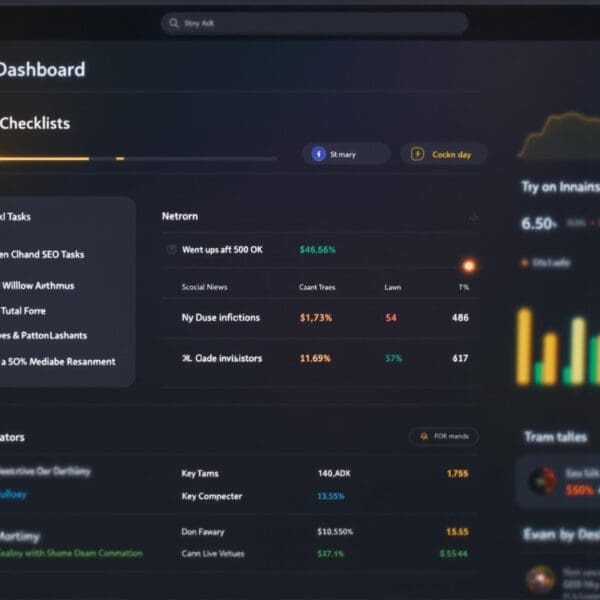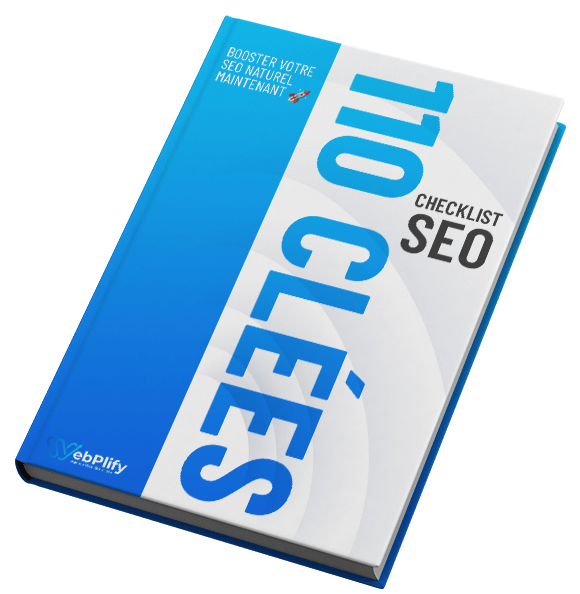Creating a high-performance website in 2024 is crucial to a company’s online success. Here are the key points to remember:
- Strategic impact : A website is an essential marketing tool for visibility and credibility.
- Varied types and costs: From showcase sites to e-commerce, options to suit every need and budget.
- 7-step process: From defining objectives to creating content, a methodical approach is essential.
- Key features: SEO, optimal UX, accessibility and responsive design are crucial to efficiency.
- Future outlook: AI, augmented reality and enhanced security will shape the future of websites.
As a specialist in SEO and website design for almost a decade, I can confirm that having a website in 2024 has become an unavoidable necessity for any company wishing to build a successful online presence. In this text, we’ll explore the essential aspects of creating a high-performance website, from the reasons why it’s so important to the key steps involved in its realization.
Table of contents
ToggleWhy is creating a website in 2024 essential for a company?
In today’s digital age, a website is much more than just a virtual shop window. It’s a genuine marketing tool that can significantly enhance a company’s visibility, brand awareness and credibility. Here are the main advantages of having a website in 2024:
- Increased search engine visibility
- Effective communication about the company and its products/services
- Answering user questions 24/7
- Gather valuable visitor information
- Incentive to action (contact, purchase, etc.)
It’s essential to note that 90% of French Internet users will have made online purchases by 2021. This statistic underlines the crucial importance of a solid web presence for companies wishing to thrive in today’s economic landscape.
Over the course of my career, I’ve seen many companies radically transform their business thanks to a well-designed website. For example, a small local handicraft store saw its sales increase by 200% in just six months after the launch of its professional e-commerce website.
The different types of website and their costs
The choice of website type depends on the company’s objectives and budget. Here’s an overview of the main types of site and their average costs:
| Type of site | Average cost |
|---|---|
| Landing page / one-page site | 100$-500$ |
| Showcase site | 500-$2,000 or more |
| Blog | 600-$2,500 or more |
| E-commerce site | 800-$10,000 or more + payment fees |
| Event site | 0- $3,000 or more |
| Custom site | Starting at $1000 |
It’s essential to note that these costs can vary considerably depending on the complexity of the project. A simple site can be created for free or for around $15/month if you do it yourself, while a complex site created by a professional can cost upwards of $10,000.
Elements that influence the cost of a website include :
- Design and interface ($500-$10,000 or more)
- Accommodation (0-250$/month)
- Domain name (0-illimited/year)
- Templates ($0-$70)
- CMS ($0-160/month)
- SSL certificate (0-100$/year)
- E-commerce features (from $20/month)
- Applications and integrations (0-100$/month)
- Marketing tools ($0-1000 or more/month)
As a web professional, I’ve found that many entrepreneurs often underestimate these costs. It’s essential to plan your budget carefully to avoid unpleasant surprises.

How to create a high-performance website in just 7 steps?
Creating a high-performance website requires a methodical approach. Here are the 7 essential steps to a successful online presence:
- Clearly define the site’s objectives: What do you want to achieve with your website?
- Identify your target audience: Who are your potential visitors and what are their needs?
- Choosing the right type of site: Depending on your objectives and your audience.
- Select a relevant domain name: It must be memorable and reflect your business.
- Opt for a reliable web host: The quality of your web hosting has a direct impact on site performance.
- Choosing the right site builder or CMS: Depending on your technical skills and needs.
- Create quality content: Content is king when it comes to SEO and user engagement.
Once these steps have been completed, it’s vital to actively promote your site to maximize its visibility. This can include SEO, content marketing, social media and online advertising strategies.
Over the years, I’ve seen many web projects fail for lack of proper planning. That’s why I always recommend taking the time to define each step before embarking on the actual creation.
Characteristics of an effective website
For a website to be truly effective and achieve its objectives, it must possess certain essential characteristics:
- Search Engine Optimization (SEO): The site must be designed with SEO best practices in mind in order to be visible on search engines.
- Smooth navigation and optimal user experience: The interface must be intuitive and pleasant to use on all devices.
- Accessibility: The site must be accessible to as many people as possible, including the disabled.
- Loading speed: A fast site improves user experience and SEO.
- Responsive design: The site must adapt perfectly to all screen types.
- Quality, regularly updated content: This is essential for building visitor loyalty and improving SEO.
Website design in 2024 requires a holistic approach that takes all these aspects into account. It’s vital not to neglect any one of these elements, or risk compromising the overall effectiveness of your online presence.
In my professional practice, I’ve often found that the most successful sites are those that manage to strike the right balance between aesthetics, functionality and technical optimization. It’s this subtle blend that creates a truly memorable experience for visitors, and sets them apart in an increasingly competitive digital landscape.
Future prospects for websites
Being passionate about web technologies, I’m constantly on the lookout for emerging trends that will shape the future of websites. Here are some interesting perspectives to consider for 2024 and beyond:
- Artificial intelligence and personalization: AI will enable advanced personalization of the user experience.
- Augmented and virtual reality: These technologies will offer immersive experiences on websites.
- Voice search optimization: Optimization for voice search will become crucial.
- Progressive Web Apps (PWA): These web applications will offer an experience close to that of native applications.
- Enhanced security: Protecting user data will be a priority more than ever.
These technological developments open up exciting new possibilities for companies that adopt them wisely. However, it is vital to bear in mind that technology must always be at the service of business objectives and user needs.
Ultimately, having a successful website in 2024 is not just about technology, but also about strategy, creativity and engagement with your users. By following the tips and best practices presented in this post, you’ll be well equipped to create a strong, effective online presence that will support your company’s growth in the years to come.















